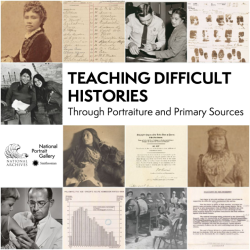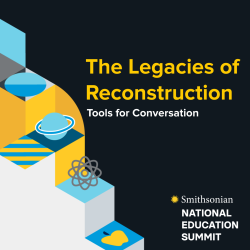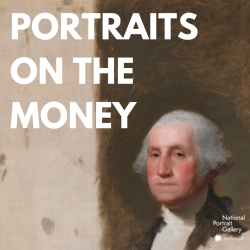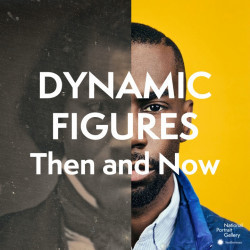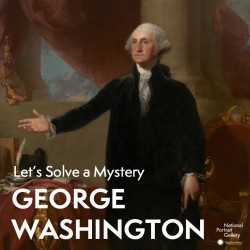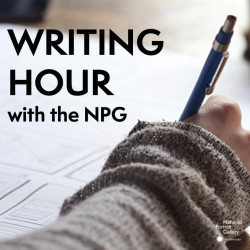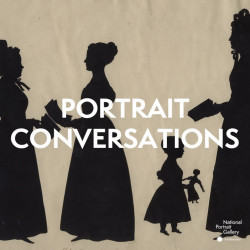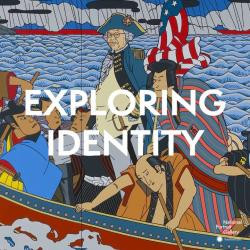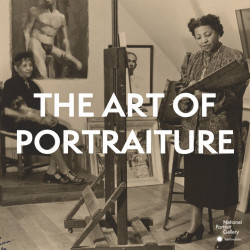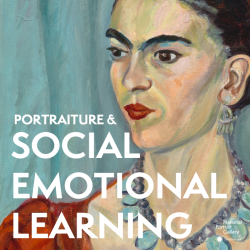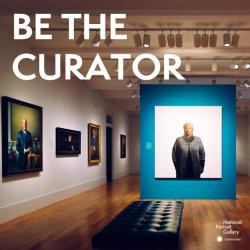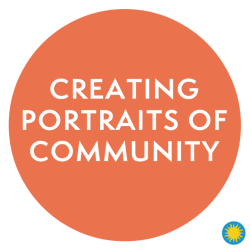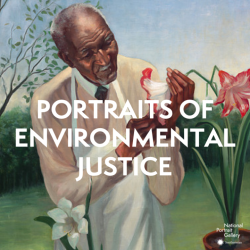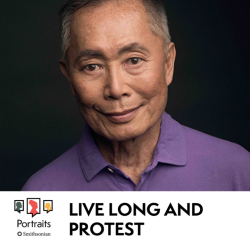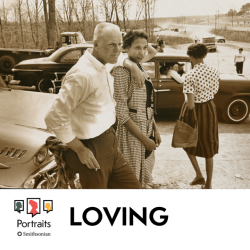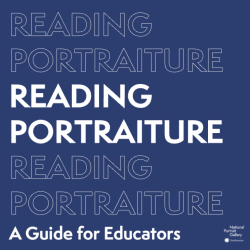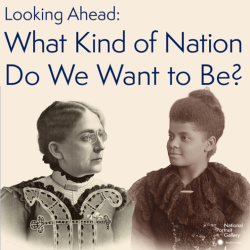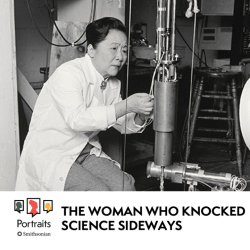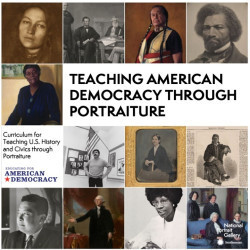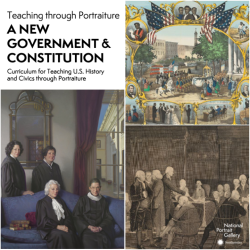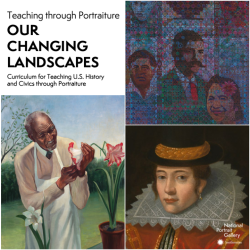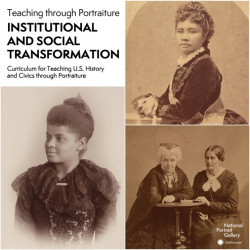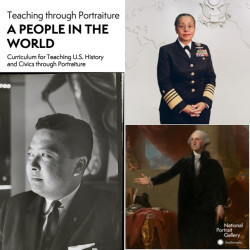Nicole Vance's collections
Teaching Difficult Histories with Primary Sources and Portraiture
<p>How do we teach a balanced, comprehensive, and complex history of the United States? In this collection, explore themes of civil rights, American imperialism, Native histories, the ethics of medicine, and more. Through document analysis and reading portraiture strategies, uncover previously unknown stories and consider the pressures and motivations that shaped historical controversies. <br></p>
<p>This Learning Lab collection has been created in conjunction with the Teaching Difficult Histories Through Portraiture and Primary Sources professional development workshop, co-hosted by the National Portrait Gallery and the National Archives and Records Administration, in August 2023.<strong></strong><strong></strong></p>
<p>#NPGteach</p>
 Nicole Vance
Nicole Vance
83
Legacies of Reconstruction: Tools for Conversation
<p>Why is Reconstruction relevant today? This collection engages learners with inquiry and object-based learning strategies to support conversations about our racial past and consider the relevance of Reconstruction's legacies. With a focus on drawing connections between past and present, this collection seeks to empower educators and students by introducing them to new ideas for integrating art into conversations about Reconstruction. </p>
<p>This Smithsonian Education Summit workshop was facilitated by Elizabeth Dale-Deines (Smithsonian American Art Museum), Candra Flanagan (National Museum of African American History and Culture), and Briana Zavadil White (National Portrait Gallery).<br></p>
<ul></ul>
<p>#NationalEducationSummit #NPGteach<br></p>
 Nicole Vance
Nicole Vance
50
PORTRAITS Podcast: Portraits On The Money
<p>In this lesson, students will analyze portraits included on American money, explore American symbolism and learn more about the time in which the currency was created. Students will also have the opportunity to listen to the perspectives of art historians and former Treasurers, and explore the applications portrait in American money past, present, and future.</p>
<p>This lesson plan was written by NPG Teacher Advisory Board Member Tom Bober who works as the District Library Coordinator + Library Media Specialist at the School District of Clayton in Clayton, Missouri.<br></p>
<p></p>
 Nicole Vance
Nicole Vance
38
Portrait Conversations
<p>This Learning Lab Collection complements the National Portrait Gallery student program Portrait Conversations.</p>
<p></p>
<p>Through this discussion based program students will compare and contrast visual elements in portraits across different historical eras, paying particular attention to differences in style and media and to the variety of historical contributions represented. Students will read portraiture by identifying and analyzing the elements of portrayal to learn about the biography of the sitter.</p>
<p></p>
<p>#NPGteach</p>
 Nicole Vance
Nicole Vance
54
Exploring Identity through Portraiture
<p>This Learning Lab complements the National Portrait Gallery's student program, Exploring Identity through Portraiture.</p>
<p>Exploring Identity through Portraiture explores the ways in which artists and sitters use portraiture as a means to convey individual, community/cultural, and national identity. By analyzing portraits, including self-portraits, students will consider how the artists tell the sitters’ stories, paying attention to how the artists’ choices reveal some—but perhaps not all—aspects of the sitters’ identity. Students will explore how portraiture can be an avenue that they can use to represent their own identities and make meaning of what is important to them.<br></p>
<p><strong>Objectives</strong></p>
<p><strong></strong>After completing this lesson, students will be better able to: </p>
<p>• Examine how modern and contemporary artists use portraiture to reveal aspects of a sitter’s individual, community/cultural, and national identity. </p>
<p>• Identify key components of a portrait and discuss what one can learn about the sitter through these components. </p>
<p>• Discuss the artistic choices that portrait artists make and consider how such decisions can reveal the artists’ viewpoints and also influence the viewers’ understanding of the sitters’ identity. </p>
<p>• Use the museum’s collection as a gateway to investigating and exploring one’s own individual, community/cultural, and national identity.</p>
<p>#NPGteach</p>
 Nicole Vance
Nicole Vance
70
The Art of Portraiture
<p>This Learning Lab Collection complements the National Portrait Gallery student program, The Art of Portraiture.</p>
<p>Students will take a close look at modern and contemporary portraiture through the lens of artists’ decisions, paying particular attention to the different approaches that artists take to their subject matter and the different processes that they use in making their art.<br></p>
<p>#NPGteach<br></p>
<p>Objectives:</p>
<ul><li>Examine modern and contemporary portraiture and identify, compare, and contrast visual elements in the portrait.</li><li>Identify and analyze the contributions of modern and contemporary Americans to U.S. history and society.</li><li>Discuss the specific choices an artist has made in his or her portraits.</li><li>Discuss the relevancy of portraiture as a contemporary art form.</li></ul><p>Learn more about our <a href="https://npg.si.edu/teachers/school-groups">virtual 2020-2021 student programs</a> and explore more of the <a href="https://learninglab.si.edu/org/npg">National Portrait Gallery's Learning Lab collections</a>.</p>
<p>Keywords: Portraiture, Painting, Sculpture, Photography, Mixed Media, Video Art, Engraving, Printmaking, Artist, Contemporary, Artistic Style, Symbols, Biography, Self-Portrait</p>
<p></p>
 Nicole Vance
Nicole Vance
48
Portraits of Environmental Justice
<p>What is our relationship to the rest of the natural world, and what are our responsibilities toward it? How do scientific, political, social, economic, aesthetic, and moral considerations factor into our decisions? In this collection learn about key people—scientists, politicians, activists, writers, and artists—whose work has influenced attitudes toward the environment in the United States.</p>
<p>This collection includes portraits from <a href="https://npg.si.edu/exhibition/forces-nature-voices-shaped-environmentalism-0"></a><em><a href="https://npg.si.edu/exhibition/forces-nature-voices-shaped-environmentalism-0">Forces of Nature: Voices that Shaped Environmentalism</a></em> on view at the National Portrait Gallery October 20, 2023 - September 2, 2024.</p>
 Nicole Vance
Nicole Vance
97
PORTRAITS Podcast: On the Beat
<p>In this lesson, students will analyze the power of perspective, reflect on "drawn journalism" as portraits, and engage in meaning making around objects in their lives using portraits by artist Wendy McNaughton.<br></p>
<p>This lesson plan was written by NPG Teen Programs Specialist, Sahtiya H. Hammell.</p>
 Nicole Vance
Nicole Vance
24
PORTRAITS Podcast: Live Long and Protest
<p>In this collection, students will analyze the importance of representation, reflect on the role of discrimination in the mid-20th century and reflect on the role of protest in American citizenship. </p>
<p>This lesson plan was written by NPG Teen Programs Specialist, Sahtiya H. Hammell.</p>
 Nicole Vance
Nicole Vance
25
PORTRAITS Podcast: The Woman Who Knocked Science Sideways
<p>In this lesson, students will use close-looking to learn more about Experimental Physicist, Dr. Chien-Shiung Wu and discuss the contributions of women to science, technology, engineering, art and mathematics (STEAM) fields. </p>
<p>This lesson plan was written by NPG Gallery Educator, Erin Koester-Tussell.</p>
 Nicole Vance
Nicole Vance
24
Teaching American Democracy through Portraiture
<p>This Learning Lab complements, "Educating for American Democracy" a roadmap for excellence in history and civics featuring portraits from 1600 to today. The portraits are used as entry points to teach about the history of the United States and civic values. This collection serves as a home base, organizing the following components: (1) Background Essay and Timeline; (1) About Educating for American Democracy; (2) Reading Portraiture 101; (3) Seven Themes: Lesson Plan; (4) Design Challenges: Artmaking Prompts.</p>
<p>Throughout these Learning Lab collections, students will examine not only the portraits’ subjects and artists but will also gain insight into the larger historical time period in which the subjects lived. By studying the portraits, students will be able to understand how the sitters in these portraits exercised agency and explored civic themes. </p>
<p>Educators will come to this Learning Lab collection from a wide range of disciplines and grade levels and can use the activities and resources as they see fit. The materials have been developed toward middle school social studies classes to allow teachers to scaffold lessons and add extension activities as needed. This Learning Lab collection was designed to be integrated with flexibility. It can be used in order, as single-time activities, or in various combinations to support existing topics in the curriculum.</p>
<p>#NPGteach</p>
 Nicole Vance
Nicole Vance
19
Teaching American Democracy through Portraiture: A New Government and Constitution
<p>In this Learning Lab collection, group portraits are used an entry points to teach about the the constitution, amendments, and branches of government. Throughout this collection, students will examine not only the portrait subjects but will also gain insight into the larger historical time period in which the subjects lived and how they made change in American government.<br></p>
<p>This collection contains three lessons that highlight activists: "Reading Portraiture: Values, Identities, Actions," "Engaging History: Picturing Amendments," and "Connections to the Present: Three Branches of Government."</p>
<p>Review Reading Portraiture 101 before beginning the lessons.</p>
<p>#NPGteach #EducatingForDemocracy</p>
 Nicole Vance
Nicole Vance
67

